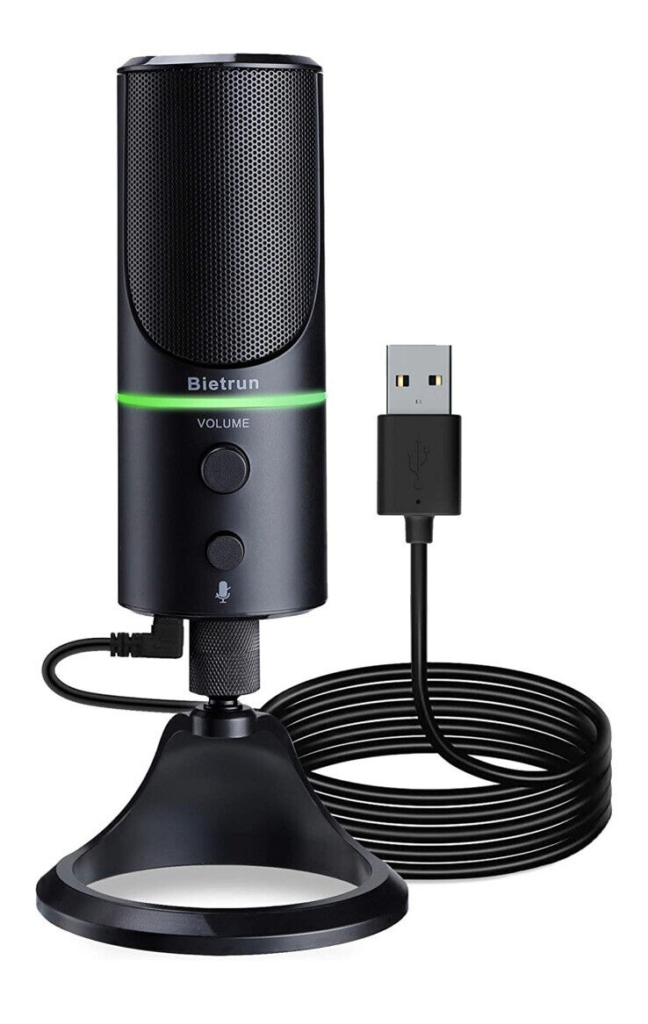In the late 19th century, Alexander Graham Bell invented the first practical telephone. Bell’s telephone employed a diaphragm and a magnet to transform sound waves into an electrical current.
Several innovators and engineers produced adaptations of Bell’s telephone during the next few decades, including Emile Berliner, who invented the first flat disc phonograph in 1887, and Thomas Edison, who created the first practical phonograph in 1877. These early analog devices recorded and reproduced sound, paving the way for the current analog microphone.
In the 1930s and 1940s, Bell Labs engineers created the first modern analog microphones, which converted sound waves into electrical currents. Broadcasting, music recording, and public speaking all utilized these mics.
In the 1950s and 1960s, solid-state electronics and the transistor made analog microphones smaller, more robust, and more sensitive. Analog microphones are still extensively used, but digital microphones have mostly replaced them in professional situations.
What is an analog microphone?
An analog microphone is a type of microphone that turns sound waves into an analog electrical signal. This is done with the help of a diaphragm, which moves when sound waves hit it and turn the movement into an electric current.
Evolution of Microphone Designs: From Carbon to Condenser
Microphones, integral tools in the realm of audio technology, have undergone a fascinating evolution since their inception. From the primitive carbon microphones to the modern marvels of dynamic and condenser microphones, this journey is a testament to human ingenuity and the relentless pursuit of audio excellence. In this article, we will explore this evolution, delving into the transition from carbon microphones to dynamic and condenser variants. We will also unravel the intricate differences in technology and applications, while shedding light on the noteworthy advancements in microphone designs and materials.
Transition from Carbon Microphones
In the late 19th century, carbon microphones pioneered the path for audio technology. These early devices utilized carbon granules to modulate electrical current, translating sound waves into electrical signals. Despite their groundbreaking nature, carbon microphones were bulky, lacked sensitivity, and produced significant noise.
Dynamic Microphones: Technological Leap
The advent of dynamic microphones marked a significant leap in microphone technology. Using electromagnetic induction principles, dynamic microphones operate on the electromagnetic induction principle, where a diaphragm attached to a coil moves within the magnetic field, generating electrical signals. Dynamic microphones are rugged, capable of handling high sound pressure levels (SPL), making them ideal for live performances and recording loud sound sources such as guitar amplifiers and drums.
Condenser Microphones: Precision and Sensitivity
Condenser microphones, also known as capacitor microphones, revolutionized the audio industry with their precision and sensitivity. Unlike dynamic microphones, condenser microphones employ an electrostatic diaphragm and a backplate separated by a small air gap. This arrangement captures sound waves with exceptional detail, making them ideal for studio recording, podcasting, and capturing nuanced vocals or acoustic instruments.
Differences between Dynamic and Condenser Microphones
- Technology: Dynamic microphones utilize electromagnetic induction, whereas condenser microphones employ electrostatic principles.
- Sensitivity: Condenser microphones are more sensitive, capturing subtle sounds and nuances with precision, whereas dynamic microphones are less sensitive but can handle high SPL.
- Applications: Dynamic microphones excel in live performances and high-volume environments, while condenser microphones are preferred in controlled studio settings for their detailed and accurate sound reproduction.
Advancements in Microphone Designs and Materials
Over the years, microphone designs have evolved, incorporating advanced materials and technologies:
- Miniaturization: Microphones have become smaller and more portable, enabling their integration into various devices such as smartphones and action cameras.
- Noise Reduction: Advanced noise-canceling technologies and materials have significantly reduced background noise, ensuring cleaner audio recordings.
- Material Innovation: The use of lightweight yet durable materials, such as carbon fiber and specialized metal alloys, has enhanced microphone durability and performance.
The Resonance of Analog Microphones in Music Recording: A Timeless Elegance
In the ever-evolving landscape of music recording technology, analog microphones stand as stalwarts of a bygone era. Despite the digital revolution, these analog marvels continue to weave their magic, shaping the very essence of the music we love. This article delves into the profound impact of analog microphones on the music industry, exploring their influence on iconic songs and albums, as well as their significant contributions to the diverse tapestry of music genres.
Impact on the Music Industry
Analog microphones have left an indelible mark on the music industry, shaping the sonic landscapes of countless recordings. Their warm, rich tones and natural harmonics lend a unique character to music, making them invaluable assets in studios worldwide. The tactile quality of analog microphones adds depth and soul to recordings, a quality often sought after in an era dominated by digital precision.
Famous Analog Microphones and Iconic Recordings
- Neumann U47: This legendary microphone, with its large diaphragm and tube design, has graced numerous classic recordings. Frank Sinatra’s velvety vocals on “Strangers in the Night” and The Beatles’ harmonies in “Please Please Me” were captured using the U47, cementing its status as an icon.
- AKG C12: Renowned for its smooth frequency response and versatility, the AKG C12 contributed to the creation of iconic tracks such as John F. Kennedy’s speeches and the haunting vocals of Billie Holiday, enhancing their emotional impact.
- Shure SM57: Although not a studio condenser, the SM57 dynamic microphone is a workhorse in the music industry. Its robust construction and clarity have made it a staple for recording electric guitars, snare drums, and brass instruments in genres ranging from rock to jazz.
Contributions to Music Genres
- Rock and Roll: Analog microphones played a pivotal role in capturing the raw energy of rock and roll pioneers like Elvis Presley and Chuck Berry. The iconic Shure SM58, for instance, was instrumental in immortalizing the powerful vocals of rock legends.
- Jazz: Jazz, a genre reliant on subtle nuances, benefits greatly from the warmth of analog microphones. The AKG C414, for instance, has been used to capture the intricate melodies of jazz saxophonists and the smooth vocals of jazz singers, preserving the genre’s authenticity.
- Blues: Analog microphones have been instrumental in capturing the soulful expressions of blues musicians. Muddy Waters’ electrifying performances and B.B. King’s emotive guitar playing were beautifully captured by microphones like the RCA 77-DX ribbon microphone, contributing to the genre’s emotive resonance.
Microphones in Broadcasting and Communication
Microphones are the unsung heroes of broadcasting and communication, serving as the bridge between voices and the ears of the audience. In the realms of radio broadcasting, television production, public address systems, and live events, microphones play a pivotal role in shaping the way we receive information and entertainment. This article explores the historical significance of analog microphones in broadcasting and communication, their applications in public address systems and live events, and the innovative advancements in microphone technology for specialized applications in studio recording and field reporting.
Role of Analog Microphones in Radio Broadcasting and Television Production
- Warmth and Authenticity: Analog microphones, with their inherent warmth and richness, have been the preferred choice in radio broadcasting and television production for decades. They capture the depth of human voice and emotions, creating a more intimate connection with the audience.
- Dynamic Range: Analog microphones offer a superior dynamic range, enabling them to capture subtle nuances as well as handle high-intensity sound sources. This versatility is crucial in broadcasting environments where different voices and sounds need to be captured accurately.
Utilization in Public Address Systems and Live Events
- Public Address Systems: Analog microphones are the backbone of public address systems in stadiums, conference halls, and public venues. Their reliability and ability to capture clear audio over long distances ensure that announcements, speeches, and music reach the audience with clarity and precision.
- Live Events: In concerts, theater performances, and live events, analog microphones are essential for capturing the raw energy of live performances. Their durability and ability to handle high sound pressure levels make them ideal for amplifying musical instruments, vocals, and other audio elements on stage.
Advancements in Microphone Technology for Specialized Applications
- Studio Recording: Advancements in microphone technology have led to the development of high-resolution condenser microphones with extended frequency response and low self-noise. These microphones are ideal for studio recording, capturing every detail of vocals and instruments with unparalleled clarity.
- Field Reporting: For field reporters and journalists, portable and rugged microphones with advanced noise-canceling features have become indispensable. These microphones are designed to minimize background noise and wind interference, ensuring clear and professional audio recordings even in challenging outdoor environments.
Features of an analog microphone
An analog microphone is a type of microphone that turns sound waves into an analog electrical signal. Some things about an analog microphone:
- Diaphragm: The diaphragm is a thin, flexible membrane that vibrates in response to sound waves and turns the vibrations into an electrical current.
- Transducer: The part of the microphone that turns the mechanical energy of the diaphragm into an electrical current is called the transducer.
- Audio output: The connector on the microphone that lets it connect to a sound system or recording device is the audio output. Most analog microphones have a 3.5mm or 1/4″ jack with the words “line out” or “audio out” on them.
- Polar patterns: Different analog microphones can have different polar patterns, which affect how the microphone is pointed. Polar patterns like figure-eight, cardioid, and omnidirectional are common.
- Frequency response: The range of frequencies that a microphone can accurately reproduce is called its frequency response. Most analog microphones can pick up sounds from 20 Hz to 20 kHz, the full range of sounds people can hear.
- Sensitivity: A microphone’s sensitivity is how well it can pick up quiet sounds. Most analog microphones have a sensitivity of -40 dB to -60 dB, which means they can pick up sounds as quiet as a whisper.
- Impedance: A microphone’s impedance is how hard it is for an electric current to flow through. Most analog microphones have an impedance between 200 and 600 ohms, making it easy to connect them to various audio devices.




